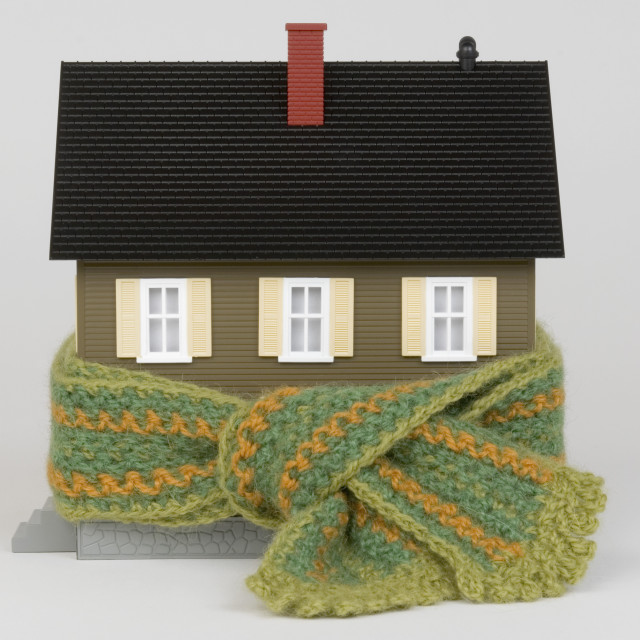
One reason people prefer a hot water heating system over a forced air heating system is they say “the hot water heating system does not dry out the air like a forced air system does”. This is true because with hot water heating there is less infiltration and exfiltration of air into and out of your home. Forced air heating systems increase infiltration and exfiltration of a home’s air due to slight pressure differences
During the heating season the relative humidity level inside your home-
- Has a huge impact on your level of comfort. Relative humidity should not be less than 30% and should not exceed 60% according to the “standard effective temperatures and ASHRAE comfort zones”. ASHRAE stands for the American Society of Heating, Refrigeration and Air-Conditioning Engineers. Low relative humidity levels increase evaporation from nose and throat membranes and also cause dryness of your hair and skin. Within the 30% to 60% humidity range, a 10% increase in relative humidity will increase the “apparent temperature” you feel by approximately 1F.
- Has a significant effect on the control of air-borne infection; 50% relative humidity appears to be the optimum level to control air-borne infections. The desired range is between 30% and 60% relative humidity.
- Has a significant impact on static electricity inside your home. A relative humidity of 45% or more usually reduces or eliminates electrostatic effects in many materials.
- Low relative humidity can damage wood floors, furniture and art work.
As a rule of thumb, a warm air furnace’s humidifier will use around 5 gallons of water per day. It takes around 41,000 BTUs to add this 5 gallons of water liquid to the homes air by making the liquid water vapor. This adds up to a lot of extra energy used per year just to maintain humidity level. Remember this does not increase the actual temperature of your air, it just adds water as vapor to increase humidity.
Normal living activities such as showers, washing cloths and dishwashing add around .7 pounds of water per hour as water vapor to a home, this is for a family of 4. Since hot water heating systems minimize infiltration and exfiltration of air, normal living activities can maintain a desirable humidity level in home with hot water heat.
The bottom line is to minimize your energy costs you should minimize infiltration and exfiltration of your homes air. It costs a lot of money just to heat the introduced air and significant additional money to replace lost moisture to maintain a comfortable and healthy humidity level inside your home. At 70F, for every 10% increase in relative humidity you can decrease your home’s temperature by 1F while retaining the same level of comfort, so with increased humidity you can lower your thermostat setting while maintaining the same comfort level.
We hope by reading this you have a better understanding of relative humidity, how relative humidity affects your comfort level and health, why warm air heat is notorious for “drying” the air in a home and why hot water heat is a more effective and efficient way to heat your home.
If you want to increase the relative humidity inside your home there are many options. One humidifier, centrally located, within your home is adequate for humidity will travel to all rooms provided the room doors are open. Be advised, it will take about 1000 Btuh to bring one pound of water liquid to water vapor to raise relative humidity. So minimizing infiltration and exfiltration of your homes air will save energy, improve comfort and help keep your home healthy.
More interesting reading…
Relative humidity levels depend on ambient air pressure and for the example below we will use sea level or an ambient pressure of 14.7 P.S.I.
- 350F air at 100% relative humidity heated to 700F air results in a relative humidity level around 28%
- 700F air at 50% relative humidity cooled to around 500F has 100% relative humidity.
- A 1,500 square foot house with 8 foot ceilings has around 12,000 cubic feet of air.
- At 700F and 0% relative humidity it would take adding 6.9 pounds of water to bring the 12,000 cubic foot house to 50% relative humidity.
- I takes around 6,900 BTUs to add 6.9 pounds water as vapor to increase relative humidity in a 12,000 cubic foot home. 1 gallon of water weighs 8.3 pounds.
- Normal living activities such as showers, cloths and dishwashing add water vapor to your home every day. A family of 4 adds around .7 lbs./hr. or 16.8 lbs./day of water vapor to their home. An average house has around 1 Air Change per Hour (ACH)
As a rule of thumb a warm air furnace humidifier would use roughly 5 gallons of water per day to add humidity to a home. This is in addition to the normal addition of water vapor to your home through cooking, showers, dishwashing and additional various normal living conditions. 1 gallon of water weighs 8.3 pounds, therefore 5 gallons weighs 41.5 pounds. It takes around 41,500 BTUs to add 41.5 pounds of water as vapor to your house, this is for 1 day. The bottom line is it costs a significant amount of money to add humidity to your home. With hot water heat you minimize this cost.
Naturally, this does not address the airborne contaminants and dust from unsanitary ductwork or the drafts and noise from warm air furnace heating systems. That is another story.

